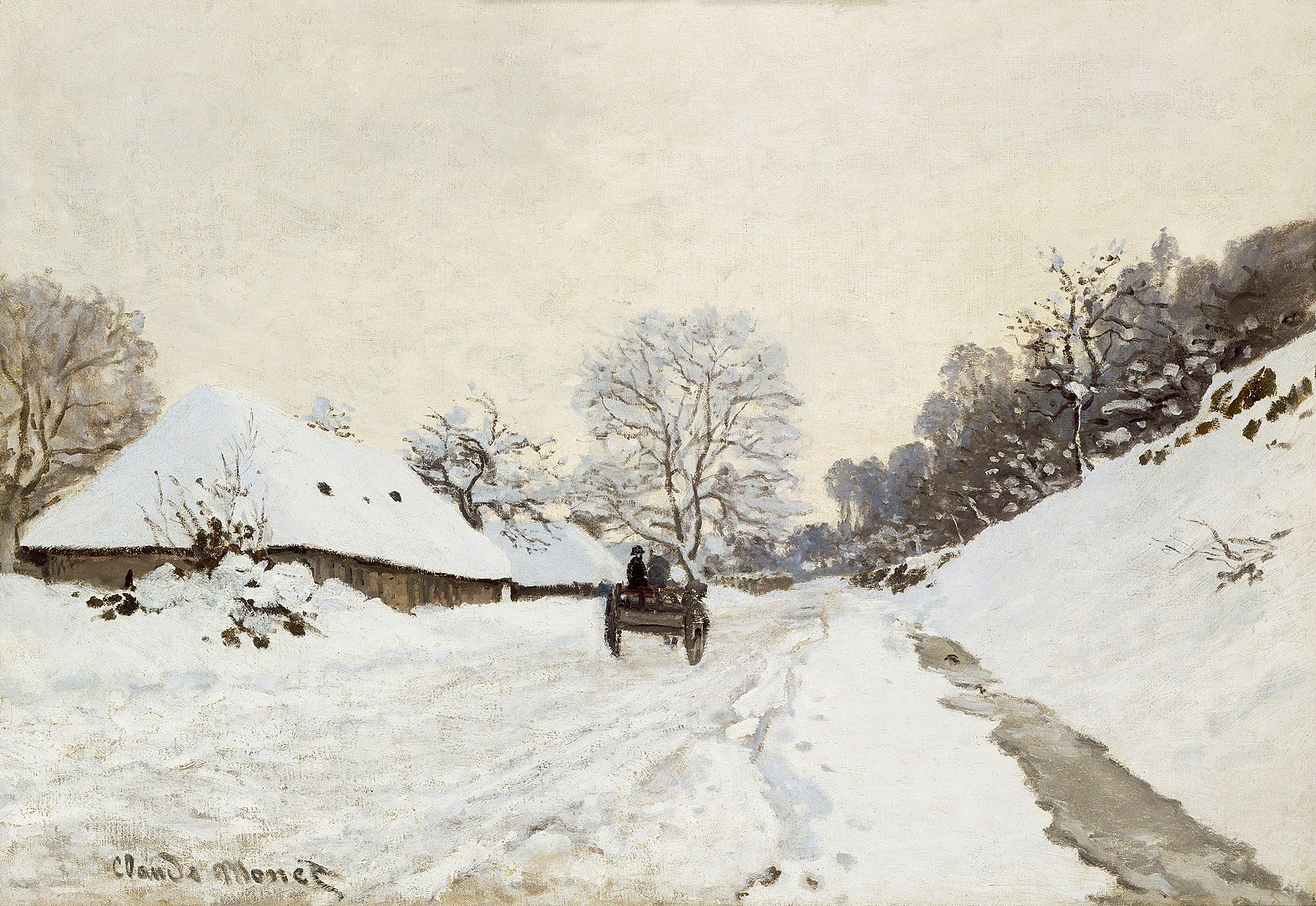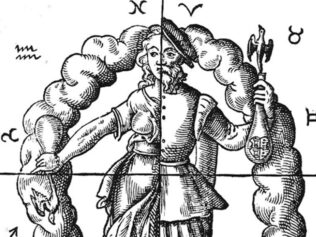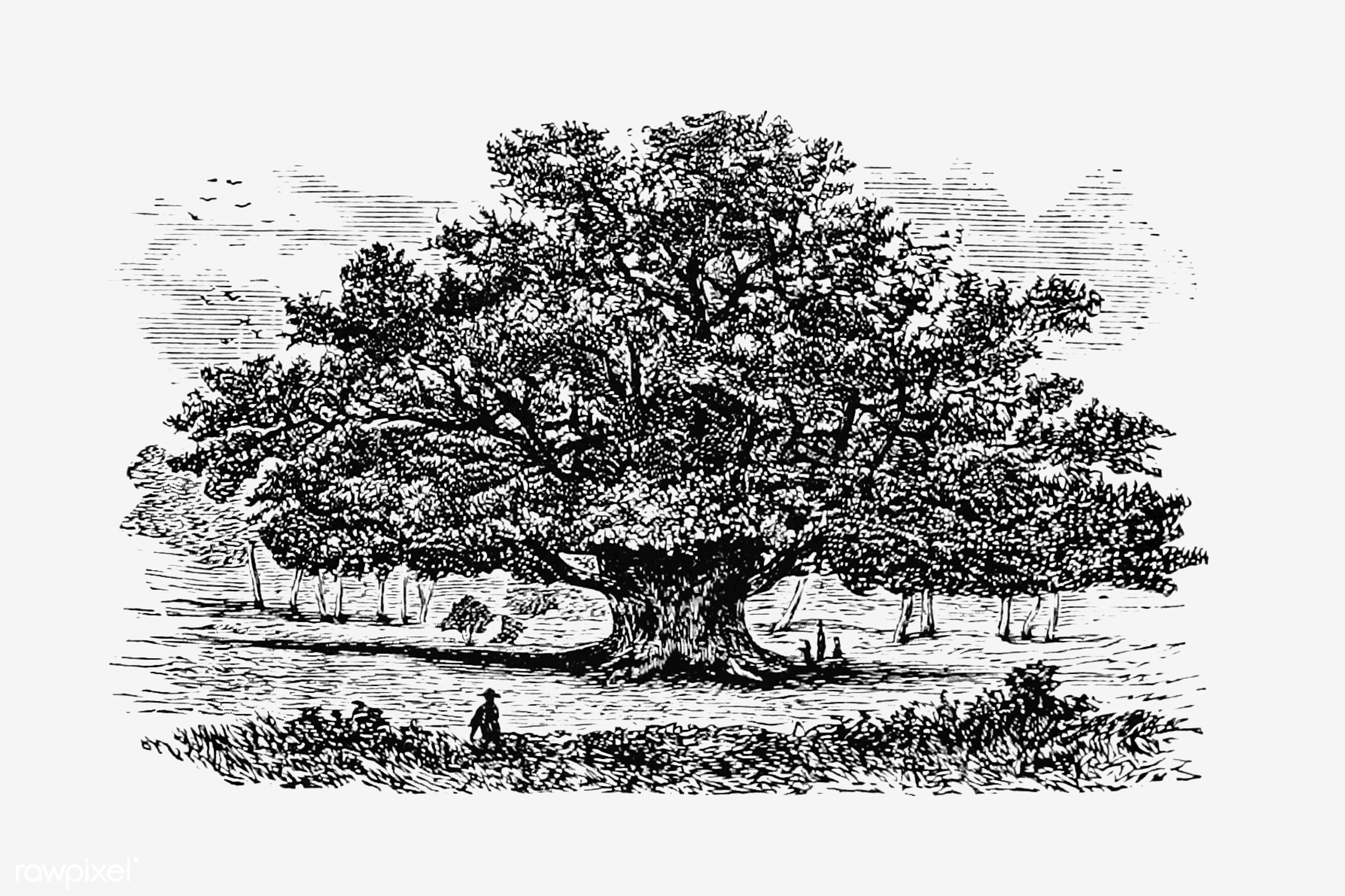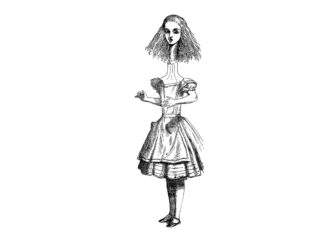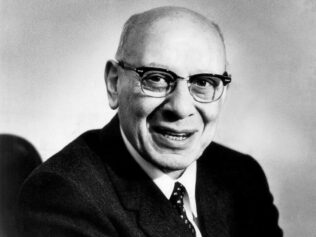
The easiest to identify among the four temperaments are the choleric and the phlegmatic types. In fact, since Hippocrates’s times, they have usually been depicted together. Here lies the key to the last and perhaps most interesting temperament—the phlegmatic.
The choleric is the kind of person that summer makes impulsive, angry, but also persevering. Work-wise and emotion wise, the sunny heat is the guiding spirit of fierce personalities, who do not find peace as easily as others. As such, the choleric temperament ostensibly has little in common with the peaceful phlegmatic, whose existential kingdom is, conversely, the winter season. Yet in spite of their apparent differences, they might share something in common.
The Winter Mirror
Hippocrates and his followers did not observe people themselves, but everything around them: the natural world, of which humans, according to the ancients, have always been an integral part. The human being was lodged in their minds like a piece of a much bigger puzzle, seamlessly fitting into nature. For this reason every discovery made about Homo sapiens used to be the product of long and patient observation—a whole millennium would pass before physicians started performing autopsies, and blood circulation remained a great mystery for hundreds of years.
The changing temperature and landscape allowed human personalities to become part of the same world: lively and moving, a combination of soil, air, water, and sun, constantly changing its form. In fact, every bit of knowledge about the human body came from looking—stubbornly sitting in the wild for months or even years, holding vigil in the depths of Mother Earth and gazing in all directions. Hippocrates required his students, future doctors, to have extensive knowledge about constellations and astrology.
Humorism evolved in a similar way. The four bodily fluids—blood, phlegm, yellow bile, and black bile—that according to Hippocrates determined one’s temperament, were believed to reflect the quadruplicity of nature. Four seasons, four cardinal directions, four elements, and so on. To the ancients, humans were part of the same natural system as the meandering river, the moon-gazing dog, or the tree so deeply rooted in the ground. A system determined by changeability, but also repetitive in its changeability.
By studying the rhythm of nature—alternately: movement and stagnation—the ancient philosophers could imagine the inside of the human body without a scalpel and through simple analogy. They perceived it as the other side of the same world, its mirror reflection. In this reflection, they could make out the four human temperaments. The winter mirror of the landscape was believed to reflect the figure of the phlegmatic.
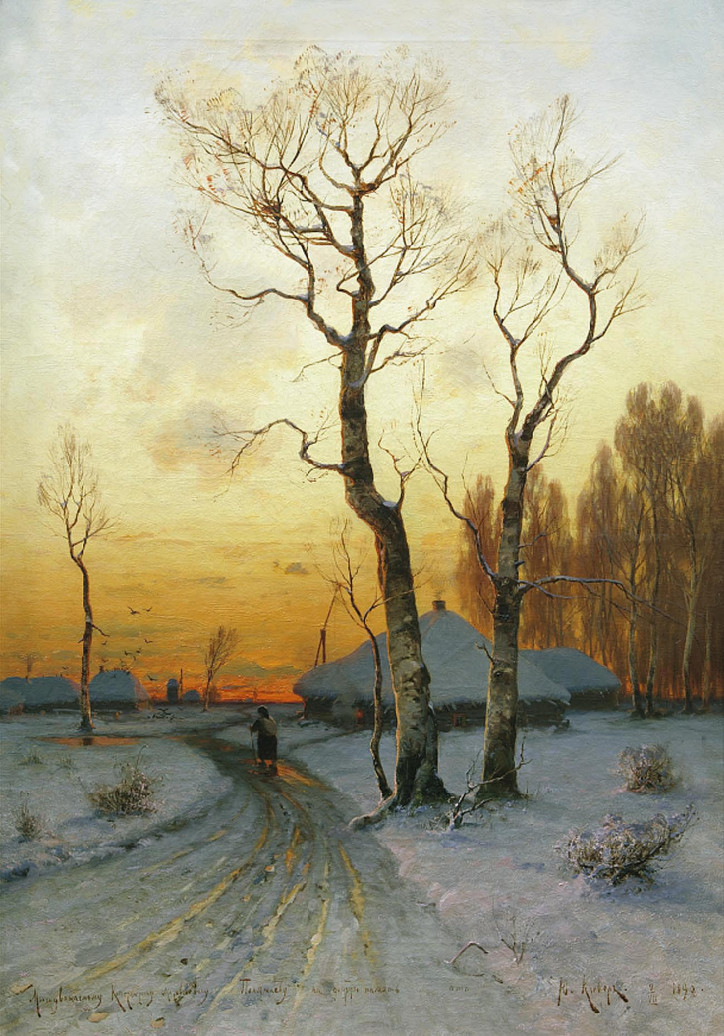
The Old Languages of Water
“Where in one fire takes the upper hand / he shall be of the choleric strand. / The other, when by water overcome / brings to surface his phlegmatic frown.” These lines, written by the 17th-century Polish poet Stanisław Samuel Szemiot, come from a song of the past, but the way they represent certain features of the human character remains valid today. Throughout the ages, the elements have provided a convincing, powerfully imaginative language to speak about emotion. This is because the same code is used by the body: it becomes inflamed under stress, screaming and fuming, and stays cool when waiting, sleeping, and calming down. Rain puts out fires—once on a scorching-hot day I was on my way to an exam and used water from my bottle to cool down my aging car— while cool showers bring relief on warm evenings. Water is cooling, refreshing, relaxing. It is the oldest language spoken by the body, which in water returns to its beginnings, its birth, its periods of complete safety.
The phlegmatic, however, whose true element is water, and for whom phlegm is the dominant bodily fluid, suffers from an excess of moisture. Indeed, phlegm, or mucus, was described as the coldest of all humors. For this reason, phlegmatics were believed to be able to easily restrain their emotions or the anger of their companions, and more generally to block out bothersome aspects of the external world. In the 21st century, phlegmatics are lousy consumers and marketing agencies are having trouble targeting them as clients. They are old-fashioned, slow, and careful in making decisions—the excess of water naturally inclines phlegmatics to constancy. They do not change their friends or partners unless they have to. They find solace in daily rituals, even more than the melancholic type. A phlegmatic friend will be the last one to move house, to buy a new car or coffee mug.
Until the turn of the 19th century, children in schools were taught to recognize various personality types merely by looking at facial features or body shape. The phlegmatic temperament was associated with gentle features and a “rounded” figure. “Pale, with a white complexion, beautiful hair, round shapes, sluggish movements, and weak blood pressure,” summarized teacher Hipolit Witowski in the booklet Szkółka powszednia dla młodzieży umiejącej czytać i po prostu rachować [Common Lessons for Youths Capable of Reading and Simple Arithmetic]. Johann Kaspar Lavater, an 18th-century Swiss pastor, mentioned “relaxed facial features” and argued that phlegmatics always seem a little older than they really are.
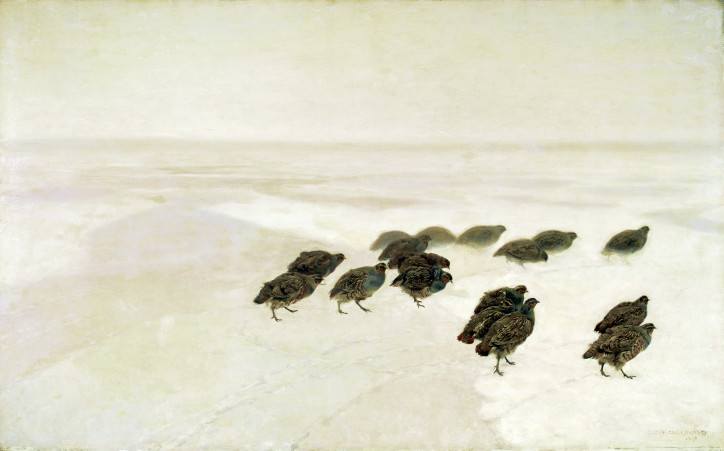
Watery Dreams
In the writings of other ancient philosophers phlegm was so much more than the throat mucus one has in mind when using the word today. The Greek word phlégma was used to describe a fluid that passed through all tissues in the body, just like water that cools, purifies, and nourishes. It was closer to the contemporary meaning of lymph. Formerly, the phlegmatic was actually described as lymphatic. An excess of phlegm influenced not only one’s personality, but also their dreams and daily musings. In 1616, a lawyer from Kraków named Teodor Zawacki wrote in Latin that an excess of the fluid was preceded by “watery dreams.” A seemingly simple, almost crude analogy (Zawacki clearly tried to reproduce the thinking of the ancients).
It is an interesting trope for one more reason. Hildegard of Bingen, a medieval visionary, poet, and physician, associated humans with winter precisely because of dreams and sleeping. She recognized winter in the figure that seeks solace in naps and dreams. “But as God signified creation in humankind, so too he ordained within them the seasons of the year. For he shows summer when a person is awake, and winter when he is asleep, because as winter buries within itself what summer brings forth in joy, so a person is strengthened by rest as he sleeps, to be made ready in his powers for whatever he does when awake,” she wrote in The Book of Divine Works, one of her most popular texts. Hildegard does not mention any of the four temperaments directly, she simply describes the relationship between humans and the seasons. For various reasons, she is mostly interested in two of the four seasons: summer and winter. Maybe because in her understanding they are the most important, since they show signs of the same kind of energy flowing from two different poles, an energy that puts the world back on track.
The Crackle of Ice
The impulsive choleric embodies summer, while the serenity and power of the phlegmatic parallels that of winter. In her work Hildegard attempts to describe perseverance and incredible energy—what cannot be tamed by the choleric type comforts phlegmatics and inspires them to careful reflection. Although it seems that both of these seasons and personality types couldn’t be more different from one another, the same energy flows through them—perhaps this is why the physiognomist Johann Kaspar Lavater drew the choleric and the phlegmatic facing each other. It is this power that ignites forests and freezes the sea. The difference, however, is that cholerics carry their power in the palm of the hand while phlegmatics hide it somewhere deep inside. Summer brings to the surface what winter hides in the soil, underwater. The same river whose strong current flows freely in the summer will freeze at an extremely high pressure in the winter (physicists calculate that water freezes at 190 MPa, a pressure greater than that in the Mariana Trench).
Frost that can burst cast-iron pipes as if they were teacups will cause disasters at sea, trapping massive ships in the ice pack. Such power was depicted by Caspar David Friedrich in his painting The Sea of Ice, including almost all the marvelous hues of winter. Ultimately, it is this season and the slightly mysterious north that remain the true home of the phlegmatic.
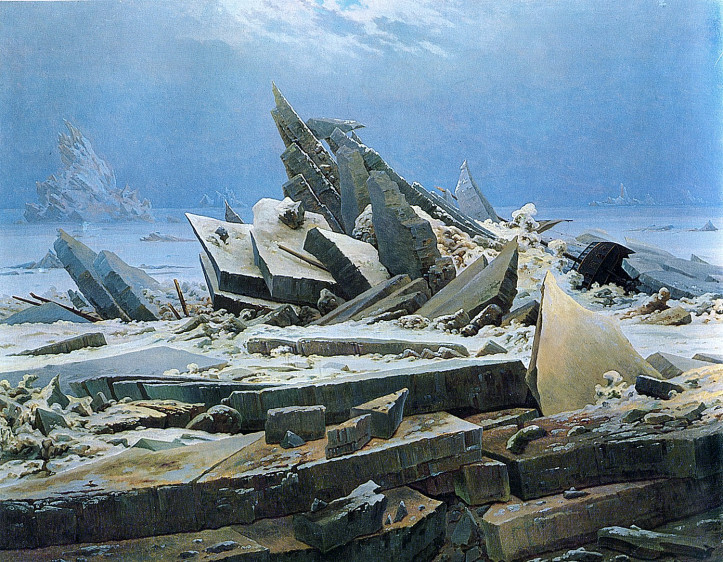
Note
1. Hildegard of Bingen, Liber Divinorum Operum: The Book of Divine Works, trans. and introduction by Nathaniel M. Campbell. (Washington, DC: The Catholic University of America Press, 2018).


